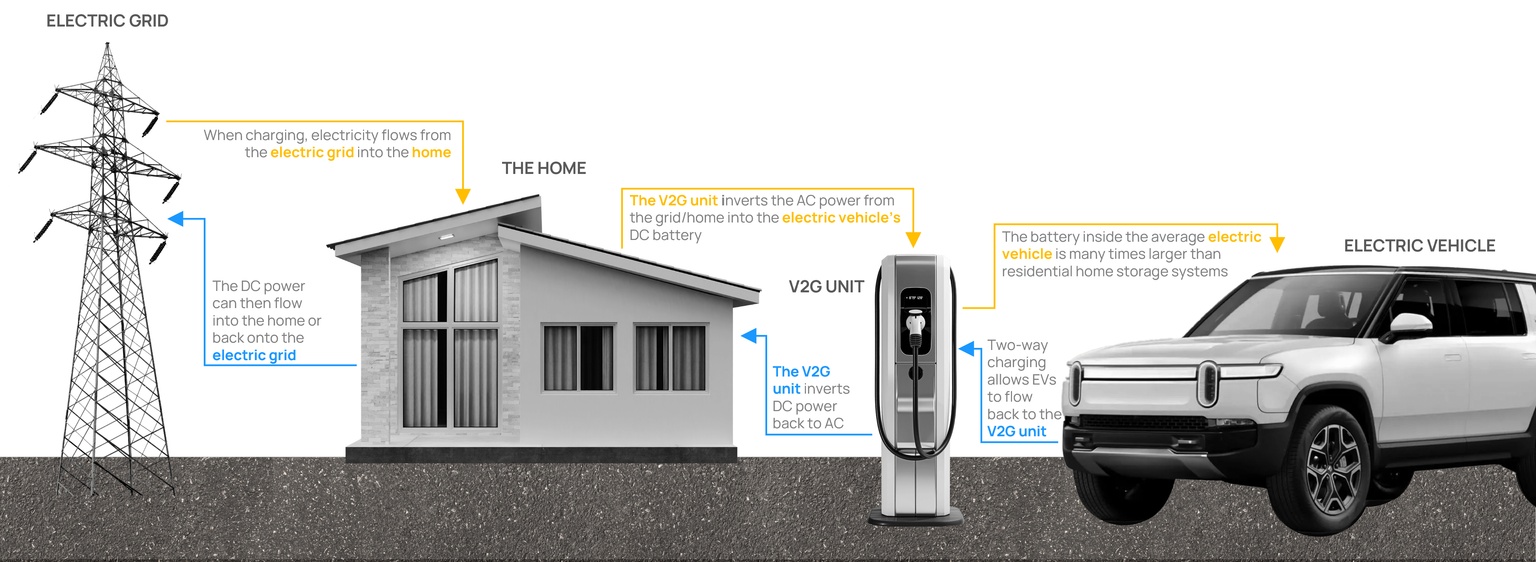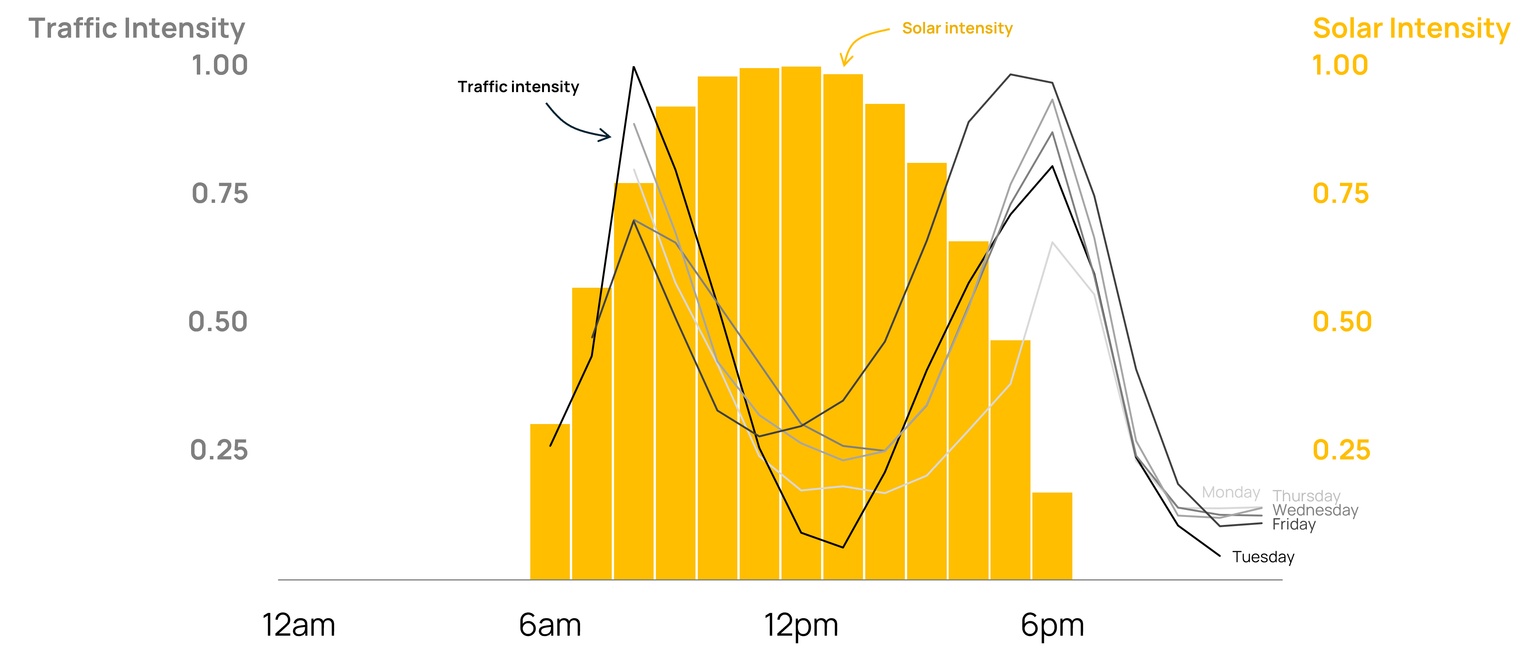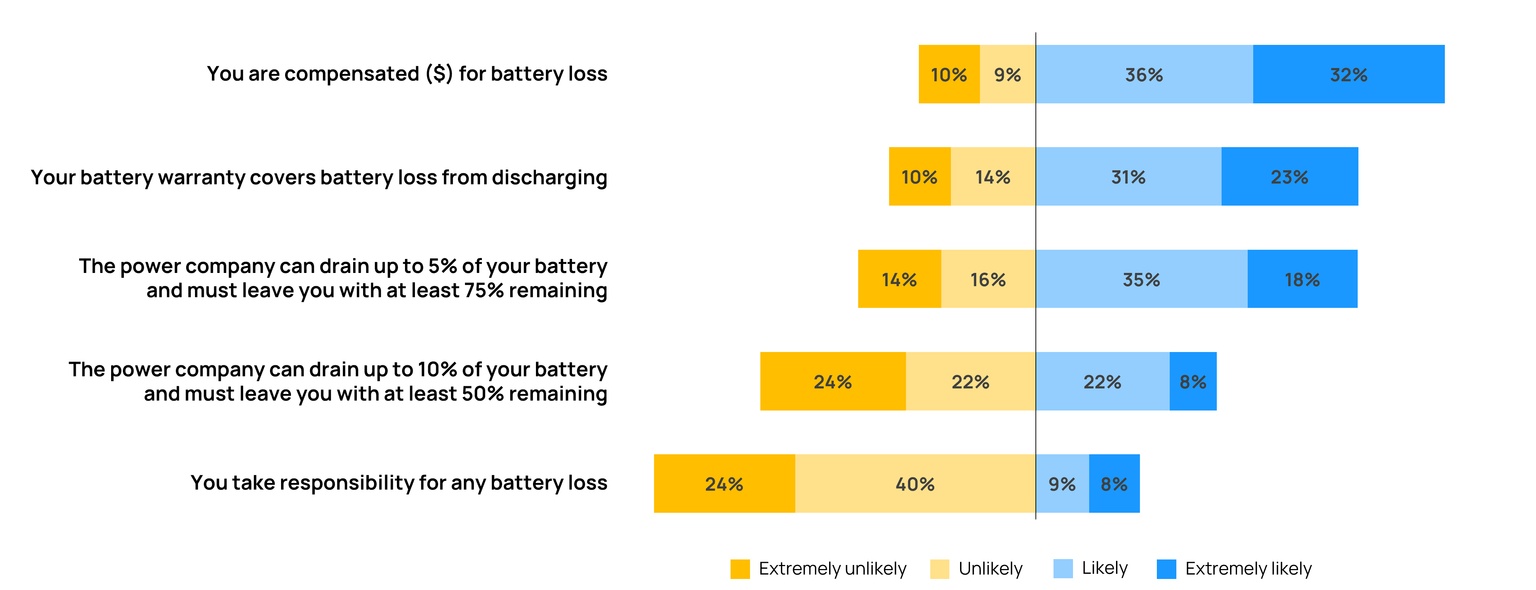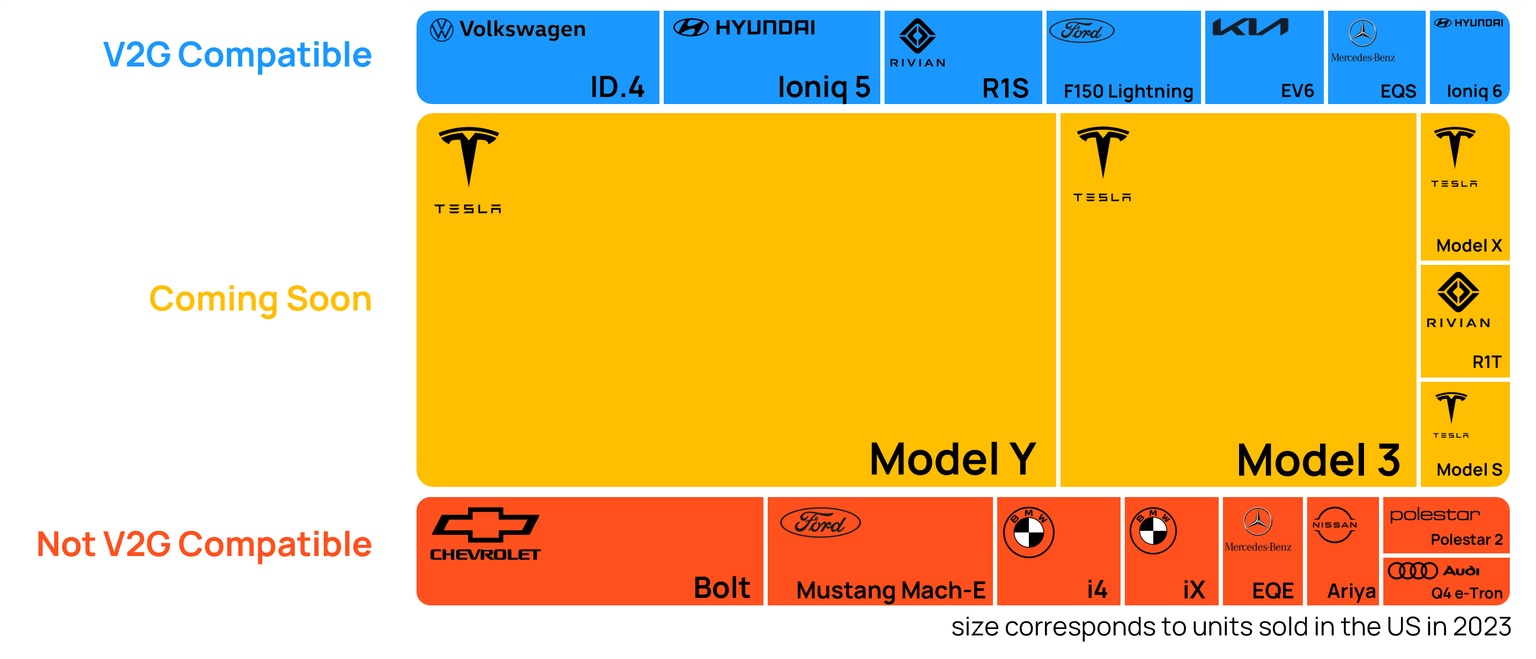
Aaron Foyer
Vice President, Research and Analytics
Electric vehicles will do more for the grid than just pull from it

Aaron Foyer
Vice President, Research and Analytics
Chris Martin and his rock band Coldplay have long been known for their commitment to the environment and sustainability, going as far as using eco-friendly ink on their merch.
The band is currently playing at stadiums around the globe on its Music of the Spheres world tour. Impressively, Coldplay reports on the carbon impact of its tour at a level that rivals many private companies (though using probably the worst website of the 21st century).
And it was all yellow green: The band’s efforts to reduce its carbon footprint include some typical initiatives, like planting millions of trees, promoting low-carbon transport to help fans travel and reducing tour waste via recycling and composting. But they do some more interesting and atypical initiatives, too.
Some of the energy used to power the spectacle is generated by the audience from kinetic dance floors and power bikes. Sustainable aviation fuel credits were purchased to offset flight emissions, and the band has donated to environmental organizations like The Ocean Cleanup.

Music of the Spheres World Tour // Photo by Stevie Rae Gibbs, Wikimedia Commons
Coldplay has also been forward-thinking with its use of electric vehicle (EV) batteries. The band claims 18 of its concerts have been powered entirely by recycled BMW i3 batteries. In Amsterdam, one show got all its electricity from around 150 stationary EV batteries charged using a solar array.
Why it matters: Coldplay has hitched its proverbial tour wagon to a technology that is growing in everyone’s minds in importance: vehicle-to-grid, also known as V2G. The idea that these large batteries may not just pull power from the grid to charge but could also go the other way and supply the grid with power when needed could reshape the power sector.
To start, the idea of V2G has been around for a long time. In 1996, a professor from the University of Delaware named Willet Kempton came up with the notion and published his idea the following year in the journal Transportation Research. To get a sense of how forward looking this idea was, at the time the paper was published, Google was a year away from being founded and Tesla was six years away.
In the paper, he highlights how vehicles are useful, but largely unused, machines.
“In the United States, for example, the vehicle fleet has over 10 times the mechanical power of all current U.S. electrical generating plants and is idle over 95% of the day. Electric utilities could use battery vehicles as storage, or fuel cell and hybrid vehicles as generation,” Kempton said.
How it works: The idea itself is simple: EVs have large batteries, so if enough are connected to the grid, they can act as a meaningful supply of power when they’re needed and revert to charging when they’re not. This is known as “bidirectional charging.”

Source: Orennia
There are some technical and human challenges to overcome (more on these later), but the opportunities created by V2G are fascinating.
As pointed out by Professor Kempton, most cars are on the road for just a fraction of time. For 95% of their useful lives, vehicles are parked. A decade ago, this opportunity was recognized by companies pursuing autonomous vehicles such as Tesla and Google, which were projecting concepts of a world without car ownership. Just fleets of self-driving Ubers that required no garages, no driveways and did away with parking tickets for good.
Today, in a world of excess renewable generation, curtailments and slow transmission build-out, idle cars look enticing again—this time because of the batteries inside them.
Driving habits: In aggregate, people keep similar schedules. Especially on weekdays, cars move and park at predictable times, making traffic the heartbeat of a city.
Looking at data from Los Angeles, the two key weekday traffic surges happen in the morning and in the late afternoon—as you’d expect. This timing works great for V2G. During the day, when solar power is increasingly curtailed and California electricity prices often go negative, most vehicles are parked and primed to charge on cheap electricity. Following a drive back home in rush hour, EVs are plugged back into the grid just as home power demand spikes.

Sources: Orennia, Tom Chester
A study led by the Idaho National Laboratory on the driving patterns of nearly 1,000 EVs found nearly two-thirds of trips were six miles or less, while the average vehicle is charged 1.5 times per day. Short trips and regularly connecting to chargers both bode well for V2G.
It’s easy to lose sight of the size of modern EV batteries. The new Tesla Roadster has a 200-kilowatt-hour battery. String five of those together and you’ve got yourself a utility-scale battery. You’d need more than 70 Tesla Powerwalls to accomplish the same feat.
Now, not every home is going to have a Roadster, but wide-scale EV adoption has equally remarkable scale. Take Texas, with 22 million registered vehicles. If every vehicle in the state were electric, each having today’s average-sized EV battery, the storage available in those batteries would be ~1.5x Texas’ total daily electricity demand. That includes all sectors: industrial, commercial and residential.
And homes: To look at it another way, your average home in Texas uses 36 kilowatt-hours of power per day. The battery in a single Tesla Model Y, the most popular EV sold in the US, could power that entire home for more than a day and a half. And that’s Texas, which has one of the highest rates of home electricity use in the country. The average home in California is half that. And most US households have two to three vehicles. At scale, EVs would be a huge amount of available storage.
Realistically, most vehicles will not be electric or participating in a V2G program any time soon. But that’s OK; fewer are needed than you might think.
In a study published in Nature last year that modeled in the impact of V2G, participation rates of between 12% and 43% are needed to meet the entire globe’s projected 2030 short-term energy storage demand. That rate falls below 10% if half of all end-of-life EV batteries are used for stationary storage.
Not limited to cars: Electric school buses (ESB) turn out to be excellent candidates for V2G. Not only do they operate on predictable schedules and spend most of the day charging, but ESB batteries are large, typically between 150 and 300 kilowatt-hours. And there are nearly 500,000 school buses across North America.

Sources: Orennia, EV Specs, Eco Affec
In an interview with Greentech Media, Highland Electric Fleets CEO Duncan McIntyre explained the benefits of using buses for V2G.
“We think electric school buses are the killer V2G app. They’re idle in the middle of the day, they’re idle in the evening, and they’re idle all summer,” McIntyre said.
So, if the technology is so great, why hasn’t V2G taken off?
There are several.
The first is infrastructure: The idea of bidirectional charging sounds easy (just send the electrons the other direction, right?). Not so easy.
The electrical grid runs on alternating current (AC), which allows it to transmit electricity more effectively. But EV batteries are direct current (DC). While this makes for better vehicle performance, it complicates charging and means an inverter is needed to convert the grid’s AC to be able to supply DC to a battery (and back again to enable V2G).
And there are different types of chargers. Level 3 chargers, which you’d typically find at public fast-charging stations, use DC. The communication standard between the grid and a vehicle for DC fast chargers is advanced with about 200 different signals at its disposal. This is to the benefit of V2G, which requires a lot of information to be sent back and forth with the grid. But if the DC-based V2G language standard has the complexity of a well-read adult, the AC-based V2G language has the complexity of an aloof teenager, with just a few basic phrases. So, the technology standard needs an upgrade. It’s unfortunate the AC-based slow chargers aren’t better positioned for V2G, being preferred at home or at malls, where vehicles will be plugged in and connected to the grid for hours on end.
The mobility of EVs poses another technical challenge, known as “roaming inverters.” Traditionally for the power grid, very large generators produce from fixed points to deliver electricity to users across the system. While things like solar panels have altered this a bit, they’re still fixed. With V2G, millions of tiny power sources would be constantly moving around the power grid connecting and disconnecting several times per day. This is a complicated hurdle that the current grid is not set up to support, and transmission engineering will need to resolve.
The second is adoption: People are wary about letting companies control devices in their home, especially critical ones like vehicles. And batteries degrade with use, so losing the functionality of one of life’s biggest purchases for a greater good is understandably not appealing. But adoption looks like it can be solved with the right business model.
A recent survey conducted by the University of Texas in Austin looked to better understand under what conditions Americans would allow a power company to discharge their EVs. Just like the 2004 hit song, it’s all about the Benjamins.

Source: University of Texas at Austin
When there is a financial motive, people are far more likely to participate in a program. The University of Texas survey wasn’t the first to figure this out. Octopus Energy, one of the world leaders in attracting participants to virtual power plant programs, was early in setting up a V2G program. Under the system, participants are guaranteed free charging if they’re willing to send power back to the grid when needed. Now that’s an incentive.
And finally, the vehicles themselves: Adding bidirectional charging to an EV is harder than it sounds. Beyond being able to flow electricity in both directions, vehicles will need advanced battery management systems that can control the flow to lower the impact on battery life. And there’s another AC/DC problem. Another inverter is needed so the DC battery can flow power back to the AC grid.
The good news is that many automakers understand that V2G will be a hot feature for EVs and are working to incorporate it into their latest models.

Source: Company disclosures, InsideEVs
Tesla, with the largest share of EVs sold in the US in 2023, announced last year all its vehicles will have bidirectional charging by 2025. While not exactly a company known for sticking to its timelines, the Tesla Cybertruck comes stock with the technology installed, so it’s not a foreign concept for the company to adopt.
The idea of “roaming inverters” represents a technical challenge, but it also represents a real opportunity. An EV world where consumers are the ones who spend the capital on batteries that grid operators can then use may outright solve many energy storage needs. There are also other use cases, like vehicle-to-home (V2H), where homes draw power from EVs. Another is vehicle-to-load, where other uses are powered by EV batteries. Even vehicle-to-vehicle is a thing.
In June of last year, a power plant failed in Germany. Within seconds, digital algorithms kicked in and 45,000 vehicles sprang into action to provide electricity for 20,000 households, averting a blackout and demonstrating the power of V2G, literally.
Coldplay’s concert in Amsterdam, powered entirely by BMW batteries is a glimpse into what a V2G future might look like. A sky full of stars, indeed.
Data-driven insights delivered to your inbox.